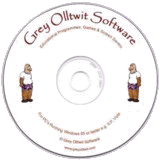
About Us
ADD/ADHD News
ADD/ADHD Books
ADDerwards
Creative ADDers
Donate
Events
GO Games
Information
Links
Natural Remedies
Research
Resources
Support Groups
Whats New
ADHD SOFTWARE
FREE DVD or CD

ADD/ADHD Online Information
ADD/ADHD Information
Tuberous Sclerosis
A parent wrote to inform us that this condition can be associated with ADHD and that around 25% of children with Tuberous Sclerosis probably have also been diagnosed with ADHD. So on investigation we were not able to find that much on Tuberous Sclerosis so the following is extracted from the Tuberous Sclerosis UK Website.
Tuberous sclerosis (TS), also known as tuberous sclerosis complex (TSC ) due to the complexity of the condition, is difficult to explain because it affects individuals in many different ways and with varying degrees of severity. Some children and adults with TS remain largely unaffected and go through life free from symptoms, whilst others who are less fortunate experience one or more of a range of symptoms.
Tuberous sclerosis is a genetic disorder with about one third of cases having been inherited from a parent. There is a 50% risk of someone with TS passing it on to any child they may have, but only approximately one third of cases are thought to run in families, with the remainder being sporadic cases.
What is Tuberous Sclerosis?
Tuberous sclerosis derives its name from the tuber-like growths on the brain which calcify with age and become hard or sclerotic. These lesions show up as small white patches on a CT-brain scan in most patients with TS. If they have not yet calcified (perhaps in a very young baby) they may not be seen on a CT-scan, but will be seen on MR images
Abnormal TS growths can affect almost any other organ of the body (including the skin, eyes, heart, kidneys and lungs) but they may cause little in the way of problems. Doctors find them helpful, though, in confirming the diagnosis.
How is it diagnosed?
The condition can be diagnosed any time from infancy to adulthood, depending upon the nature and severity of the symptoms developed by the individual patient. There are a number of different signs of tuberous sclerosis and whilst not all are necessary to make the diagnosis, a combination of some of these signs are necessary. They include:
Skin: The earliest sign may be white skin patches (depigmented patches), especially on the limbs and body, which sometimes can be seen from birth. They do not cause any problems and often disappear later in life. In addition, red or brown ‘birthmarks’ are sometimes found on the face, or a waxy looking reddish lesion found on the forehead. As a child grows older other skin signs may develop, including a characteristic facial rash (facial angiofibroma) across the nose and cheeks in a butterfly distribution. This starts as small red dots, but later these spots can become small bumps and the redness may fade. During adolescence or later, small fibromas or nodules of skin may form around finger or toe nails. Another skin sign, a shagreen patch, may be found on the lower back. It is flesh-coloured and has the appearance of orange peel.
Heart: Cardiac rhabdomyomas (benign heart tumours) are another early sign of TS. They may develop in the unborn baby and be picked up during routine antenatal scanning. They rarely cause a problem and frequently regress or even disappear altogether after the child is born.
Epilepsy: Seizures occur in approximately 70% of people with tuberous sclerosis. They may start at any age, but frequently begin in childhood, often during the first year. They often start as infantile spasms (salaam fits) for which prompt treatment is required. As the child grows older, the fits may change and sometimes they cease altogether. It is likely that the cortical tubers in TS are the cause of the seizures.
Developmental Delay: Whilst 40-50% of people with TS have normal inteligence, the remainder have learning and developmental problems ranging from mild areas of difficulty to 25% with severe disabilities. Early intervention is recommended.
Behaviour: About 25% of people with TS are autistic and another 25% show aspects of autistic spectrum disorder, including higher functioning autism or Asperger’s Syndrome. Attention deficit and hyperactivity are often found in children, and anxiety, paranoia and depression are commoner in adults. Sleep disturbance can also be a problem and is usually associated with epilepsy.
Kidneys: Very occasionally, a baby presents with polycystic kidneys which are picked up antenatally or shortly after birth, and further investigation leads to a diagnosis of TS. About 70-80% of people with TS develop some other abnormality in their kidneys, but frequently these don’t cause any symptoms, especially during childhood.
Lungs: Only very rarely will someone with tuberous sclerosis present with symptoms of lung disease.
For more information please visit the Tuberous Sclerosis Website by Clicking Here[Back To Top Menu]
ICD-10 copyright © 1992 by World Health Organization. Internet Mental Health (www.mentalhealth.com) copyright © 1995-1997 by Phillip W. Long, M.D.
Home About Us ADD/ADHD News ADDerwards Advertising Books Contact Us Creative ADDers Donate
Events Forums Information Links Natural Remedies ADDers.org News Research Resources Search adders.org
Site Map Social Stories Sponsor Events Student/Researchers Support Groups Supporters

ADHD SOFTWARE
FREE DVD or CD
